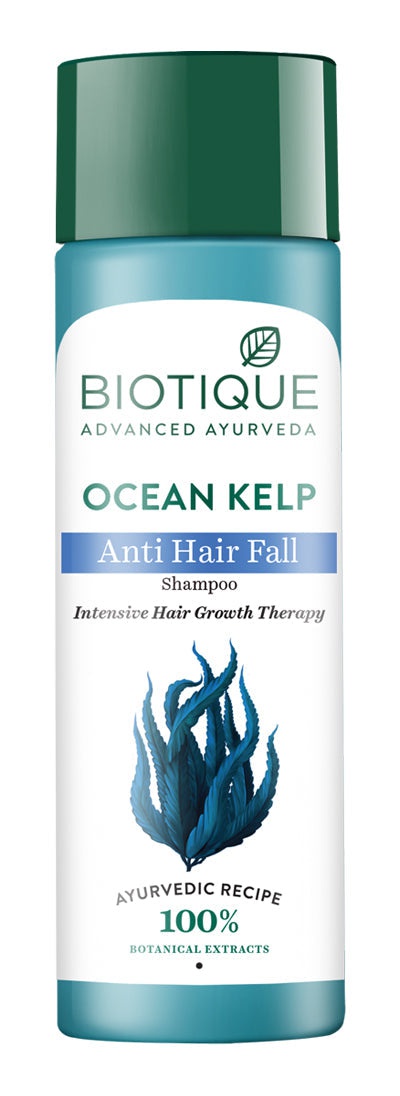
Ocean Kelp Anti Hair Fall Shampoo
Highlights
Skim through
| Ingredient name | what-it-does | irr., com. | ID-Rating |
|---|---|---|---|
| Neem (Melia Azadirchta Indica) | |||
| Butea Frondosa Flower (Tesu) | |||
| (Daruhaldi) Berberis Aristata Root Extract | |||
| Bhringraj (Eclipta Alba) | |||
| Ritha (Sapindus Mukorossi) | |||
| (Sajjikshar) Kelp | viscosity controlling | ||
| Sea Salt | |||
| Himalaya Water | solvent |
Biotique Ocean Kelp Anti Hair Fall ShampooIngredients explained
This ingredient name is not according to the INCI-standard. :( What, why?!



This ingredient name is not according to the INCI-standard. :( What, why?!
The extract coming from the giant blown kelp. It contains alginates that give Macrocystis Pyrifera viscosity controlling and thickening properties.
Other than that, there is also a manufacturer claim saying that Macrocystis Pyrifera "increases the vitality of epidermal growth, improves collagen synthesis, and maintains skin elasticity".
We wrote some more about algae extract in general here.
Good old water, aka H2O. The most common skincare ingredient of all. You can usually find it right in the very first spot of the ingredient list, meaning it’s the biggest thing out of all the stuff that makes up the product.
It’s mainly a solvent for ingredients that do not like to dissolve in oils but rather in water.
Once inside the skin, it hydrates, but not from the outside - putting pure water on the skin (hello long baths!) is drying.
One more thing: the water used in cosmetics is purified and deionized (it means that almost all of the mineral ions inside it is removed). Like this, the products can stay more stable over time.
You may also want to take a look at...
| what‑it‑does | viscosity controlling |
| what‑it‑does | solvent |






